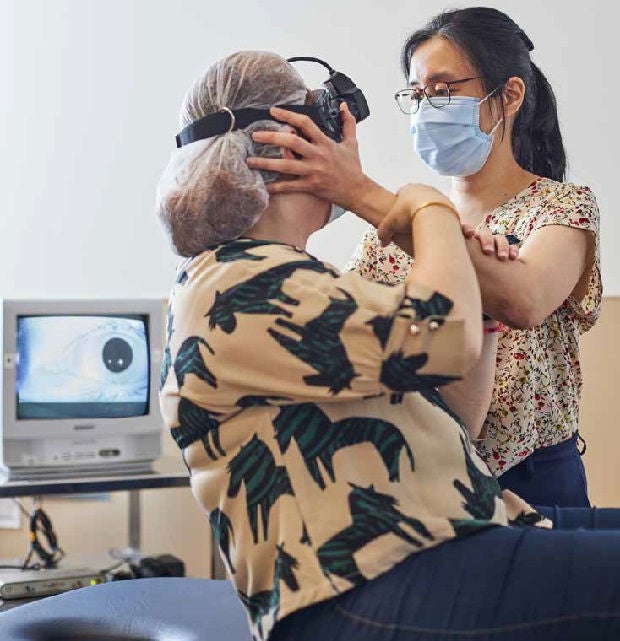
Senior Principal Physiotherapist Dr Dawn Tan, who specialises in neurological and balance disorders, is happiest when working with her patients.
When Dr Dawn Tan was going for her doctorate studies in clinical physiotherapy, someone asked why she needed to study so much. After all, physiotherapy “involved only walking patients”.
That is one of the most common misconceptions about her profession, said the Singapore General Hospital (SGH) Senior Principal Physiotherapist.
“Physiotherapy is a sciencebased practice that uses facts, clinical reasoning processes, and tests to assess a patient’s condition. We may look like we are merely ‘walking the patient’ but in fact, we are analysing his gait. There is a science behind mobilising patients out of bed and using gait analysis,” she said.
Physiotherapists are also often mistaken for masseurs, although massage techniques are a form of treatment for some conditions, Dr Tan added.
Dr Tan received a scholarship to study physiotherapy in London after her A-Levels. But it was while she was observing a total knee replacement surgery when she was on clinical attachment that she realised how crucial a role everyone in a healthcare team, including physiotherapists and other allied health professionals, plays in a patient’s recovery.

“The surgeon had done a brilliant surgery but postoperative care had to be very good, too (to ensure the patient recovers well),” Dr Tan said.
After her undergraduate studies, Dr Tan worked her way towards a doctorate while juggling fulltime work at SGH. She also holds a Master’s degree in neurological physiotherapy and a Master’s degree in applied statistics.
At SGH, Dr Tan works with patients with neurological disorders, such as stroke and Parkinson’s disease, to help them manage symptoms and improve mobility. She also runs a multidisciplinary Movement Assessment Clinic for patients with Parkinson’s disease to help identify impairments or symptoms so they can start treatment early. “If they have speech or swallowing problems, we can refer them to a speech therapist. If they are experiencing a lot of anxiety, we can refer them to our colleagues in the Psychology Department,” she said.
Another group of patients that Dr Tan works with are those with balance disorders that arise from inner ear and vestibular issues, such as benign paroxysmal positional vertigo, which can leave patients with recurrent bouts of vertigo and dizziness.
She started taking a special interest in vestibular rehabilitation after she took over a colleague’s work during the 2003 severe acute respiratory syndrome (SARS) outbreak.
“At the time, it felt like a crash course but I could see that patients were improving and their dizziness was alleviated after physiotherapy,” Dr Tan said. To further hone her skills and knowledge in that area, Dr Tan attended courses in the United States, and a clinical attachment at a vestibular clinic in Australia.
In addition, Dr Tan is an educator, mentor and researcher. She holds a teaching appointment at the Singapore Institution of Technology (SIT), where she introduced vestibular rehabilitation to the curriculum.
In research, Dr Tan looks at how motor and non-motor symptoms in patients with neurological disorders, such as Parkinson’s disease, gait disorders and sleep problems, impact their quality of life.
Yet, Dr Tan is happiest when interacting with patients and their caregivers. “It is a privilege to journey with patients and their caregivers. It is very fulfilling to empower them to achieve their goals,” said Dr Tan.
Outside of work, Dr Tan loves travelling and aims to exercise more. “I am well aware that I should practise what I preach. So whenever I can, I try to walk more or take the stairs to increase my physical activity,” she said.













 Get it on Google Play
Get it on Google Play